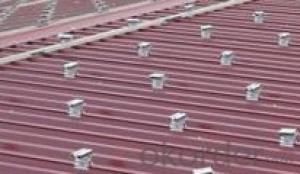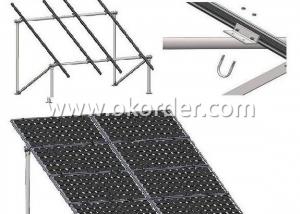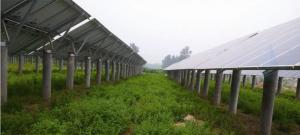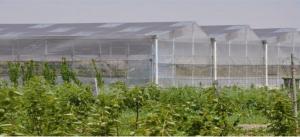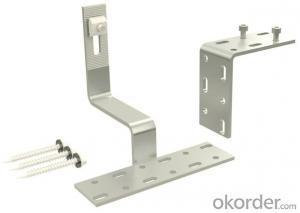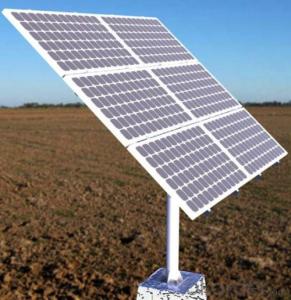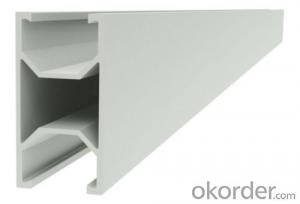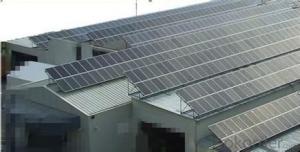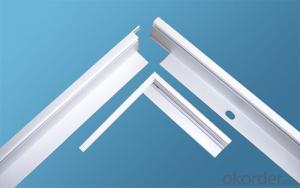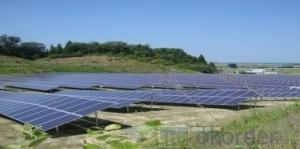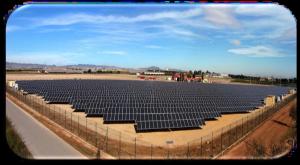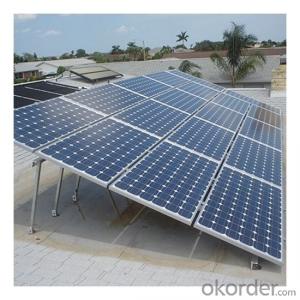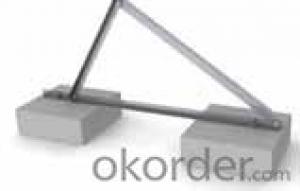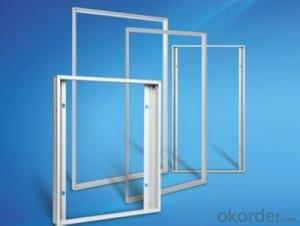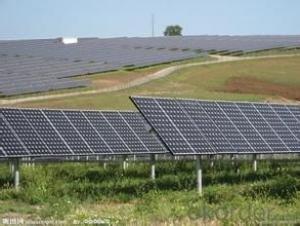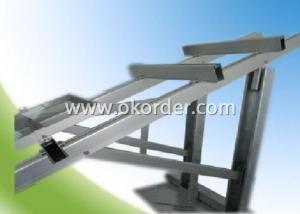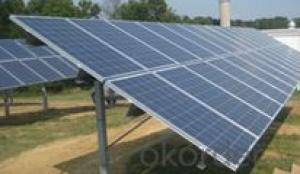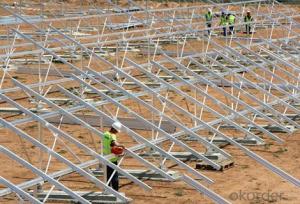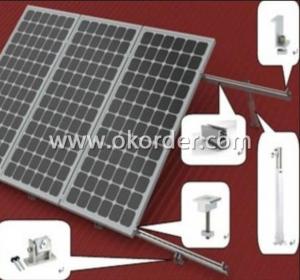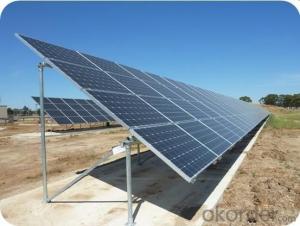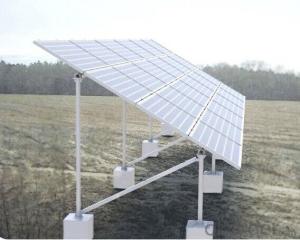Everest Solar Mounting System for Metal Roofs
- Loading Port:
- China Main Port
- Payment Terms:
- TT OR LC
- Min Order Qty:
- -
- Supply Capability:
- -
OKorder Service Pledge
OKorder Financial Service
You Might Also Like
Metal Roof Solar Racking System is engineered for the maximum flexibility possible in designing and planning for the commercial and residential roof solar system. It is applicable to install the usual framed module to flush with the pitched roof. The special extruded aluminum rail, the tilt-in module, the clamp kit and the various roof hooks can be high pre-assembly and make the installation easy and quick to save your labor cost and time. The customized length can eliminate the weld and cut onsite to keep the high anticorrosive performance, the structure strength and the appearance.
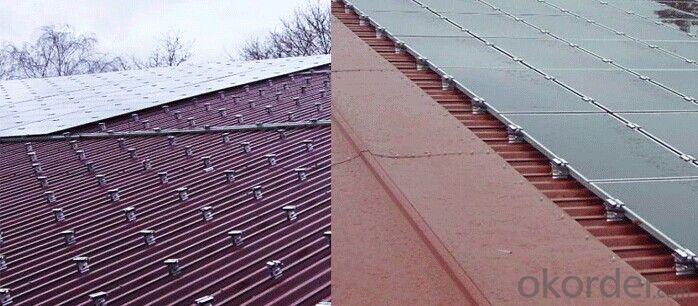
Technical Information
Install site :Pitched Roof
Tilt Angle :Flushed with the roof (10~60 deg)
Building Height:20 m
Max Wind Speed:<60m/s
Snow Load:<1.4KN/m2
Standard :AS/NZS 1170 and other international Standard
Material :High Class Aluminum alloy Al6005-T5& Stainless steel 304
Color: Natural or Customized
Anticorrosive: anodized aluminum & stainless steel
Warranty:Ten years warranty and twenty years service life

- Q: Are there any specific requirements for installing solar mounting systems in high-temperature regions?
- Yes, there are specific requirements for installing solar mounting systems in high-temperature regions. These requirements typically include using materials that are resistant to heat and UV radiation, ensuring proper ventilation and airflow around the solar panels, and implementing shading strategies to minimize heat buildup. It is also important to consider the structural integrity of the mounting system in extreme heat conditions to ensure its durability and longevity.
- Q: Are there any specific requirements for installing solar mounting systems in high-altitude areas?
- Yes, there are specific requirements for installing solar mounting systems in high-altitude areas. The main consideration is the impact of low atmospheric pressure and extreme weather conditions often experienced at higher altitudes. These factors can affect the structural integrity and performance of the mounting systems. Therefore, solar mounting systems designed for high-altitude areas should be able to withstand lower air pressure, strong winds, heavy snow loads, and temperature fluctuations. Additionally, proper grounding and lightning protection measures should be implemented to ensure the safety of the system and nearby structures.
- Q: Can a solar mounting system be used in areas with limited access to solar leasing options?
- Yes, a solar mounting system can be used in areas with limited access to solar leasing options. Solar mounting systems provide a structure to securely install solar panels, allowing individuals or businesses to directly purchase and own the solar system. This eliminates the need for leasing options and allows for greater flexibility and control over the solar energy system.
- Q: Are there any specific requirements for installing a solar mounting system on a rooftop with wind turbines?
- Yes, there are specific requirements for installing a solar mounting system on a rooftop with wind turbines. The main consideration is the structural integrity of the rooftop to support both the wind turbines and the solar panels. Additionally, the positioning and spacing of the solar mounting system should be carefully planned to avoid shading from the wind turbines, as this can significantly reduce the solar panel's efficiency. It is also important to ensure that the installation does not interfere with the operation or maintenance of the wind turbines.
- Q: Can a solar mounting system be used in areas with solar incentives for museums?
- Yes, a solar mounting system can be used in areas with solar incentives for museums. These mounting systems provide the necessary infrastructure to install solar panels on rooftops or open spaces, allowing museums to take advantage of solar incentives such as tax credits or rebates. By generating clean and sustainable energy, museums can reduce their carbon footprint and potentially save on electricity costs, while also demonstrating their commitment to environmental stewardship.
- Q: Can a solar mounting system be used on any type of roof?
- No, a solar mounting system cannot be used on any type of roof. The installation of a solar mounting system depends on various factors such as the roof structure, material, and condition. Certain roofs may not be suitable or may require additional reinforcements or modifications to support the weight and installation of solar panels. It is important to consult with a professional to determine the compatibility of a solar mounting system with a specific type of roof.
- Q: What are the foundation requirements for a solar mounting system?
- The foundation requirements for a solar mounting system typically include factors such as the soil type and stability, the weight and size of the solar panels, the local climate conditions, and the specific design and manufacturer recommendations. These requirements are crucial to ensure the stability, durability, and performance of the solar mounting system over its lifetime.
- Q: Can a solar mounting system be installed on a swimming pool or aquatic center?
- Yes, a solar mounting system can be installed on a swimming pool or aquatic center. These systems are designed to be versatile and can be installed on various surfaces, including rooftops, ground-mounted structures, and even floating platforms on water bodies such as pools. It allows for efficient utilization of space and helps generate clean energy to power the facility or supplement its energy needs.
- Q: Can solar mounting systems be installed on flat concrete roofs?
- Yes, solar mounting systems can be installed on flat concrete roofs. Flat roofs provide a suitable surface for mounting solar panels as long as there is enough space and structural support. The installation process may require specific equipment and techniques to ensure proper positioning and secure attachment to the concrete roof.
- Q: What are the characteristics of the hydraulic support hydraulic system?
- Third, the hydraulic support can be replaced lines and substitutability must be strong, that is, after the failure, can be replaced in the shortest possible time and maintenance, thereby reducing the loss and protect the safety of workers!
Send your message to us
Everest Solar Mounting System for Metal Roofs
- Loading Port:
- China Main Port
- Payment Terms:
- TT OR LC
- Min Order Qty:
- -
- Supply Capability:
- -
OKorder Service Pledge
OKorder Financial Service
Similar products
Hot products
Hot Searches
Related keywords
